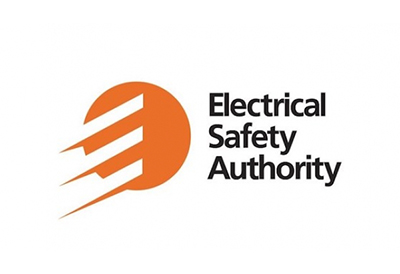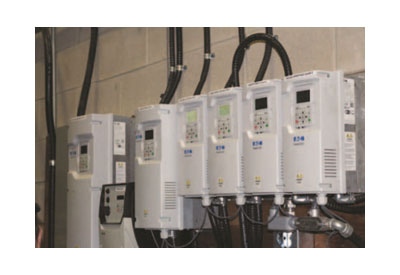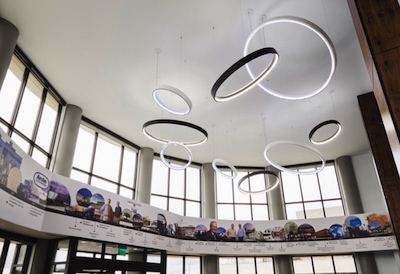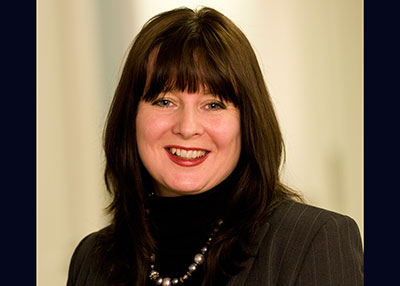Discussing the Mysa Smart Thermostat with Co-Founder Joshua Green

Nov 1, 2021
By Blake Marchand
In Canada, approximately one in three households use electric baseboards, with Quebec, BC, Newfoundland & Labrador, and Manitoba residents using primarily electric heating. However, Mysa Co-Founders Joshua and Zachary Green found there weren’t many smart thermostats for high voltage baseboard heating.
“We were inspired by Nest and ecobee, who have great smart thermostats for low-voltage systems, but there were virtually no options for baseboard heating — that was the birth of Mysa,” said Green.
“We launched our flagship product, Mysa for Electric Baseboard Heaters, in 2018 —since then, we’ve shipped close to 150,000 thermostats for baseboard heating across Canada and the U.S.”
A Mechanical Engineer out of Dalhousie University and passionate about environmental sustainability, Green began conducting energy audits for homeowners as Empowered Homes. Through that process, he recognized the majority of homes that he audited used high/line voltage heating systems. He saw a clear need for a smart thermostat solution that could improve his clients’ energy efficiency and help them save money on their electricity bills.
 “Mysa’s overarching mission is to fight climate change through the creation of innovative tech that helps homeowners increase their energy efficiency. We really believe in the importance of electrification and moving away from things that are currently fossil fuel-based,” he explained.
“Mysa’s overarching mission is to fight climate change through the creation of innovative tech that helps homeowners increase their energy efficiency. We really believe in the importance of electrification and moving away from things that are currently fossil fuel-based,” he explained.
“We knew that we needed a solution that was going to be easy to install, that homeowners, electricians, and HVAC users would easily recognize as a drop-in solution. Mysa Smart Thermostats essentially replace existing thermostats by acting as a switch between the electrical panel and the baseboard heaters.”
Mysa currently has three smart thermostat products for different applications. After launching Mysa for Baseboards, they added an option for in-floor heating, which includes a built-in GFCI. Mysa’s newest product, the Mysa Smart Thermostat for Air Conditioners, is designed to control ductless mini-split heat pumps, window, and portable AC units. Mysa for AC is a ‘plug and play’ (i.e., no hard wiring) smart thermostat solution.
Mysa for Baseboards and Mysa for In-Floor require installation in high/line voltage electrical systems. Our Canadian Electrical Code expert, Bill (William) Burr, notes that, “In the Canadian Electrical Code and in all jurisdictions, installing the Mysa is considered regulated electrical work and would require an electrical permit to make this alteration.”
In many jurisdictions, Burr noted, the permit must be obtained by an electrician or electrical contractor. However, he clarifies that, “in some jurisdictions, a homeowner is allowed to obtain a permit to do electrical work on their own home. Where this is the case, the installation will likely need to be inspected. Having said that, in some jurisdictions, if a homeowner has demonstrated they are competent to do this work, the permit may be waived.”
Ultimately, Burr said, “In each case, the local authority having jurisdiction needs to be consulted for their procedures.”
One of the biggest challenges for Mysa was developing the product at a reasonable price point, primarily given that one household may require multiple thermostats.
“Traditional smart thermostat solutions were expensive because you only needed one per home. We knew that wasn’t going to be a model that worked when you have a large number of thermostats in the home. We knew we needed to lower the price by simplifying the device and really relying on folks using their smartphone or tablet to control Mysa,” said Green. “When you look at the design of our product, it’s very sleek and modern, but that’s because we’re really trying to make it simple and lower the cost as much as possible.”

Another interesting challenge was navigating electrical certifications. “It was a really eye-opening experience, and we learned a lot from it, and ultimately it made the product better. “In terms of how the process improved the product, Green said, “I think really it was refinement. We started out with prototypes of the product, of course, and involved CSA and UL and the testing bodies that they use fairly early-on in the design process. Through various stages they helped us with understanding where our product needed to be improved, those were the kinds of changes that were being done as we were developing the product.”
“It allowed us to make a thermostat that was going to be viable, easier to install, and last longer. We learned a lot about that through CSA and UL, of which we are very appreciative.”
Mysa’s free mobile app for iOS and Android gives users full remote control of their home heating or cooling from anywhere, using their smartphone or tablet.
The Mysa app’s ‘Scheduling’ feature allows users to create and maintain their ideal heating and cooling schedules based on their day-to-day activities. “Our data shows that 80% of our users are running a schedule on their thermostat,” Green noted.
Traditional programmable thermostats, Green said, can be difficult to navigate for some users and end up getting neglected. Simplifying that programming was a key element for Mysa when developing the product.
“The average Mysa customer sets their thermostat back by approximately 3 degrees Celsius. That setback allows them to save up to 26% — and in some cases, more — on their home electricity bills. Another awesome energy-efficiency feature, Geolocation, does the setback automatically when it detects that you have left and turns the heat back on when you return.”
“We also provide really great data about how much electricity our customers are actually using. We built current and voltage sensors in so that we are measuring the electricity/power consumption, in real time.”
They are able to display hourly, daily, weekly, monthly data on how much electricity you’re using and on a per room basis, “If you enter in your electricity rate in the app, we can show you how much electricity you’re actually using per room in kilowatt hours and dollars and cents. Our customers really appreciate being able to see such granular level data and then being able to use that data to improve their schedule so they can minimize their electricity consumption.”
Users can view their energy consumption at the whole home level, and then break it down in bar graphs to see which rooms are consuming the most energy. Grouping various rooms into ‘Zones’ can also help users track energy usage effectively when working with the Mysa app.
“Before my time at Mysa, I was really engaged in energy efficiency in general. One of the things I installed at my electrical panel was an energy monitoring system,” which Green explained monitors voltage and current and displays usage in an online interface. “I thought that was a really powerful tool to be able to measure energy consumption. That’s where the inspiration came from, we are also in line with these circuits so we can measure electricity consumption.”
In addition to ongoing product development, a key focus for Mysa as the company continues to mature is expanding their presence in the market by developing more robust industry partnerships in retail and distribution. “Over the last year and a half, we’ve been expanding to work with more retail partners, as well as more trade and professional partners. We recognize they represent a huge distribution channel and great partners for Mysa.”










![Guide to the Canadian Electrical Code, Part 1[i], 26th Edition – A Road Map: Section 10 – Grounding and Bonding](https://electricalindustry.ca/wp-content/uploads/2022/11/Guide-CE-Code-2.png)





